On Monday Night Raw a few weeks ago, a loud contingent of pro wrestling fans found a new way to disrespect the women pro wrestlers in the ring. “You suck Cena!” they yelled, even though controversial World Wrestling Entertainment superstar John Cena wasn’t wrestling in the ring. Nikki Bella, the wrestler he dates, was. “You suck Bryan!” they yelled, not at the beloved wrestler Daniel Bryan but at his wife, the wrestler Brie Bella.
The jerks in the audience weren’t accidentally yelling at the wrong wrestlers; they knew exactly who they were talking to, and what they were saying. Their chants had about as much class as they had commas. Online, at least, fans largely talked about them in disgust.
The vulgarity of those chants was surprising. So too was the fact that fans — even rowdy obnoxious fans — were chanting anything during a women’s match at all. The predominant reaction to women’s wrestling in the major leagues of WWE and the defunct WCW for much of the past 30 years has been apathy.
Over the years in America, women’s professional wrestling has been treated as a sideshow, as a sort of intermission between major men’s matches. Run a short women’s match between two major men’s matches, the thinking seems to have been. Cool off the crowd. Give fans time to go the bathroom or go buy popcorn before the next match that actually matters. The best fans are going to do is heckle the match anyway.
What a surprise, then, at what 2015 has wrought: a renaissance in women’s wrestling. That renaissance has been purred, it seems, by everything from generational shifts in the family-run WWE business to a social media protest on behalf of women wrestlers. Trumping even that is the emergence of women’s wrestling in WWE’s minor league, the online-only NXT, where it is treated at last as a star attraction that gets as much cheering and respect as the men’s wrestling.
Regarding that last one, any long-time WWE fan might be shocked to tune into NXT, where there is nary a women’s match set in pudding, where there are multiple storylines involving women wrestlers, where there is a deep roster of women wrestlers, where the women are given time to wrestle an interesting match, where they’re presented as athletes. Where, hell, they’re treated, basically, the way the best male wrestlers are treated.
It turns out that fans love women’s wrestling when it’s done like that. They even think things like this are cool:
When the NXT wrestlers Sasha Banks and Charlotte recently wrestled in the — note the match placement — main event of a show, the crowd broke out into the best possible cheer: “THIS. is. wrestling!”
No shit.
It was superb pro wrestling.
Women in WWE have long been bit players. Big time pro wrestling in America, after all, has mostly been an athletic soap opera about men. It’s been an endless continuity of staged and occasionally real rivalries passing through various phases from the cartoonish Hulk Hogan-led 1980s to the envelope-pushing Stone Cold Steve Austin-led “attitude era” late 1990s to the more family-friendly and increasingly-realistic modern era led by John Cena.
In the Hogan era, the most famous woman to appear in WWE didn’t wrestle. That was the late Miss Elizabeth, on-screen manager to the “heel”, or the bad guy, Macho Man Randy Savage. She played “face”, or the good guy, quietly cheering Savage on. Her on-camera support for the high-strung Savage endeared her to fans who empathised with the classy lady saddled with an obnoxious boyfriend. When Savage ditched her for the talented female wrestler Sensational Sherri, that was really just an extended prelude to Savage’s face turn, a quest for forgiveness and an eventual marriage proposal to which Elizabeth, of course, said yes.
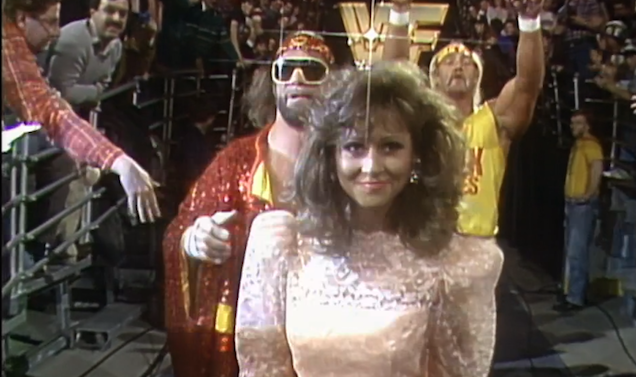
Miss Elizabeth set the standard for women as background players in WWE’s weekly drama, there to play the role of girlfriends, dupes or backstabbers. When the WWE reached its low-brow nadir in the late ’90s, Terri Runnels, who mostly served as an on-screen manager for various male wrestlers, was running through a series of storylines involving pregnancy, miscarriage and the revelation she’d never been pregnant in the first place.
But in fits and starters, women in WWE have distinguished themselves not simply as valets or vixens but as competitors.
Take Rena Mero, aka Sable, the eventual Playboy centrefold who in the late 1990s played the disrespected wife to then-real-life husband before beating him up, to loud crowd cheers.
Take Chyna, the woman bodybuilder presented at times as a freak of nature — “The 9th Wonder of the World” (Andre The Giant had been dubbed the 8th) — and who eventually, regularly competed against the WWE’s men.
And take Trish Stratus, the fitness model who made her WWE debut managing a pair of male wrestlers dubbed T&A but who eventually distinguished herself, unlike Sable, as an athletically gifted performer who could stage a believable and compelling match. Stratus even became the rare WWE woman wrestler to have a notable rivalry, hers against the popular high-flyer Lita. Here they are in the rarest of sights, a women’s match that, back in 2004, main-evented Monday Night Raw (it’s happened… maybe twice in the show’s 1100 episodes?):
Even in the brightest moments, though, WWE’s women wrestlers have rarely been given featured positions on a given night’s WWE card of matches. A decade since Trish and Lita, there has been little progress. Few segments of a three-hour episode of Raw would involve women wrestlers. You’d get one women’s match compared to eight or so featuring the men, and the same paltry amount of storylines involving women’s wrestlers per show.
In a non-staged sport, wins are a proof of talent. Pay is management’s primary way of acknowledging a player’s value. Pro wrestling is different; the best measure of a performers’ worth to a company is the amount of match time they get, the amount of time given to them on a TV show.
Wrestlers low on the card get a few minutes. Main eventers will get 20 minutes, 30 or more. If a wrestler is seen as a draw, they will be given a match on Monday Night Raw that straddles a commercial break. The show will go to commercials mid-match, but it is assumed that fans will stick around to see if these wrestlers they care about win or lose.
It’s simple: TV time = respect from management. That’s likely why it pissed off so many WWE fans when, on February 23 of this year, a two-on-two match on Raw involving the top women wrestlers in the company’s main roster — who WWE calls Divas (men are “superstars”) — got a match that lasted 30 seconds. Here it is:
(If you check it out on YouTube, for once, do read the comments.)
The 30-second match spawned a social media uprising around the hashtag #GiveDivasAChance. It trended. It turned heads. Long-time WWE chairman Vince McMahon, a workaholic who pretty much dictates what has appeared on WWE TV for the past three decades, acknowledged it on Twitter.
We hear you. Keep watching. #GiveDivasAChance
— Vince McMahon (@VinceMcMahon) February 25, 2015
A sceptical bystander might assume this was all part of a storyline. Maybe WWE ran a short match to provoke a reaction and to create support for women’s wrestling. Maybe. WWE is not above pissing off fans to make them love something in the future, and part of the fun of following modern pro wrestling does involve distinguishing the real from the fictional. But WWE didn’t make much of the fan outcry on their programming, not explicitly. Instead, women’s matches simply began to get a few more minutes. Some of them even began to span commercial breaks. There would, though, be just one women’s match at the company’s big annual Wrestlemania event in late March, slotted between two of the highest-profile contests on the card.
The 30-second match and fan protest happened the day after the Oscars, where the actress Patricia Arquette said it was time for women in America “to have wage equality once and for all.” That Monday morning, Vince McMahon’s daughter and current WWE chief brand officer, Stephanie McMahon, commended Arquette over Twitter.
Thank You @PattyArquette for having the courage to fight for #WomensRights on such a grand platform. #UseYourVoice pic.twitter.com/q71acxMExU
— Stephanie McMahon (@StephMcMahon) February 23, 2015
The Tweet must have caught the eye of AJ Lee, an unusual figure in WWE’s divas division. Lee had been a multi-time women’s champion for the company and had carried herself as an anti-diva, a longtime wrestling fan who tattooed the date of her first WWE title win on her neck. In recent years, WWE had found a surprise hit in an E! reality show, Total Divas, that featured the relationships and “real” lives of all of its top women wrestlers, with the notable exception of Lee who seemed to proudly stay off the show.
Back in February, Lee was in the midst of what has to have been one of the most awkward professional stints of any wrestler in WWE history. She was wrestling for the company but was (and is) married to male wrestler CM Punk who had acrimoniously walked out of WWE a year before and been formally fired on his and Lee’s wedding day. On Thanksgiving he released a tell-all podcast detailing his issues with the company including accusations of medical neglect, only to be sued by WWE’s in-house physician the week before the Arquette speech and the 30-second match.
Lee, apparently in the mood for not giving a fuck, replied to Stephanie McMahon’s Tweet about Arquette on the 24th, which remember, was also a day after the #GiveDivasAChance thing:


And she got the only possible reply a corporate officer can probably give an independent contractor whose husband is being sued by the company doctor:
Thank you @WWEAJLee, I appreciate your opinion. #UseYourVoice
— Stephanie McMahon (@StephMcMahon) February 25, 2015
It’s unclear what became of all that. Wages are secret in wrestling. The public doesn’t know how much a John Cena or AJ Lee makes. Women did start getting more time to compete on Raw, but that might have been as a result of the hashtag movement. It’s hard to imagine the Lee stuff was planned, and the WWE wanting the public to think it treated its female employees badly would be a reckless storyline. AJ Lee wrestled for WWE for a couple of months, got a match on Wrestlemania and was then retired to a very positive and public “thank you” from the company on their broadcasts and website.
There’s a decent chance that there’s a generational divide being exposed as this all plays out. There’s certainly a change in societal values that is evident in other aspects of WWE, such as in the company’s recent vocal support for its first openly gay active wrestler.
With women’s wrestling, the smart money is that the 69-year-old Vince McMahon, who still dictates what kind of wrestlers, wrestling matches and storylines appear on WWE’s main TV programs, doesn’t have much enthusiasm for women wrestlers. He’s long had a place for women in his company. Hell, his wife used to be the company’s CEO before she tried twice, unsuccessfully, to run for U.S. Senate.
Under Vince McMahon, women’s wrestling has been the aforementioned sideshow. He seems leery of even promoting his male wrestlers as athletes and is long known for favouring a more cartoonish presentation of pro wrestling, so it tracks that he wouldn’t have time for women wrestlers. This is a guy who would book some of his sexiest female performers to flirt with him or make out with him, back when he was playing a bad-guy boss on-camera. He’d also always make sure he got his comeuppance in those storylines, but that’s a hallmark of his outsized approach. It’s telling that it took an E! reality show targeted at women to finally begin fleshing out who WWE’s female performers were.
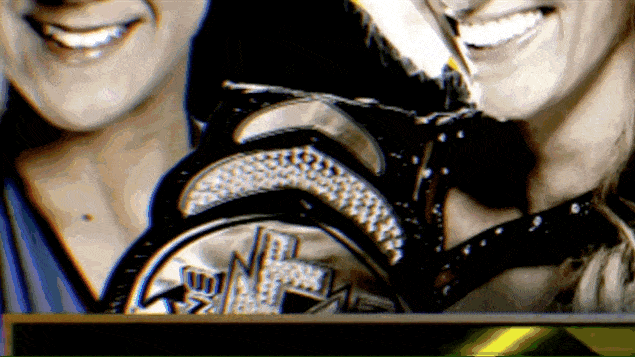
The contrast is with NXT, WWE’s minor league that is overseen by Stephanie’s husband and Vince’s son-in-law, Paul “Triple H” Levesque. There, in weekly one-hour shows, the women almost always have at least one match and backstage segments.
It’s NXT where WWE dabbled with having a female colour commentator. During a women’s match on a January episode of the show, Renee Young, at ringside, said: “Even looking at the bodies of these divas alone — I mean, I know this is an area I can comment on and not make it weird — but these girls are ripped. That is what a champion looks like.”
It’s NXT, which has been serving as WWE”s developmental system, where WWE brought in their first ever female trainer.
When Triple H recently appeared on a podcast on WWE Network streaming service, he was asked what he want to change about Monday Night Raw. He said he’d love to whittle the show down from three hours to two. He wanted to move through storylines in less of a rush. And this: “I would like to see the women get more time and more dedication… they have a lot to offer, and we have a large fanbase of women that watch. I think they’re inspirational and I think just having them have the time and the stories and all of that [would be good.]”
Triple H is a former multi-time WWE wrestling champion. Back in the 90s, he used to date Chyna. He and Stephanie are proud fitness buffs. He’s been very public about his close friendship with the hall-of-famer Ric Flair, whose daughter Charlotte is a freakishly-athletic top female wrestler in NXT, holding that spot on the merit of being a badass female wrestler.
All signs are there that he respects and cares about promoting women’s wrestling.
Here’s a visual aid.
This is the current women’s championship title belt for the top woman in the Vince McMahon-overseen televised WWE product:
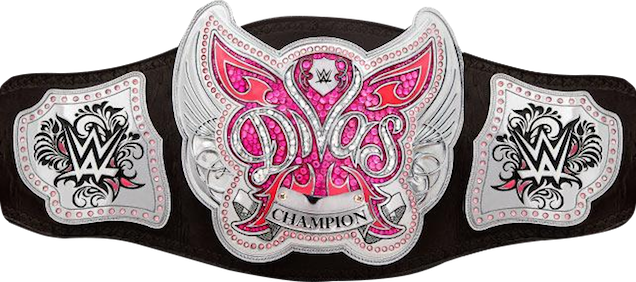
Here’s the women’s title belt for the Triple H-overseen online-only NXT:
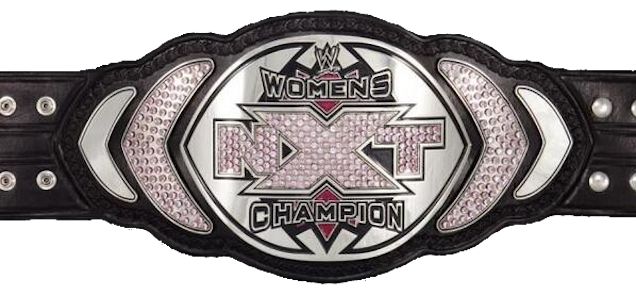
Maybe there is a glass ceiling for wrestlers in a company where the main women’s title looks like a shiny pink butterfly. But it still feels like something is finally changing, that a foundation is finally being built.
You could look to this past March’s Wrestlemania, where Triple H and Stephanie McMahon played their on-camera bad-guy roles and got beaten up by MMA star Ronda Rousey. That feels like proof that WWE is waking up to the idea that kickass women fighters can be cool.
I’d point to you to NXT, though, as the better proof. You can watch it on the premium online WWE Network or at least catch clips on YouTube. That cheering NXT crowd says it all: This is wrestling.
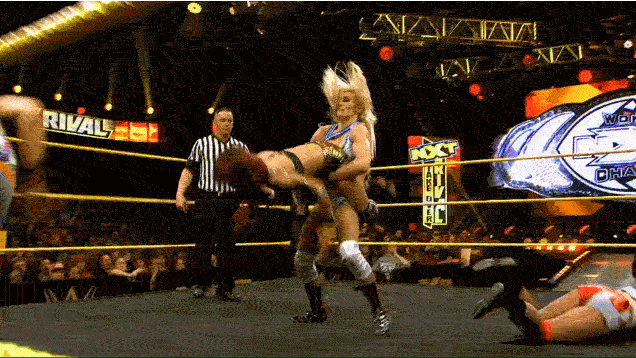
Comments
17 responses to “The Best Pro Wrestling In WWE Right Now Is Women’s Wrestling”
Lol who cares?
I was a big fan back in the days of Trish and Lita, and no other serious contenders. Lita completely won me over with her Hurricanrana, given she was one of the only decently athletic women and I had a soft spot for the lightweight wrestlers anyway. Though I haven’t been following wrestling much for years, it’s awesome to know that there’s now women who can and are giving the Women’s Division the respect it deserves.
When I discovered Womens Wrestling on TNA I never watched a WWE womens match again.
The main roster stuff on WWE is terrible but the women’s division on NXT is no joke. Actually, NXT in general is just better than main roster WWE. Even the random matches between two midcarders are often better than Raw main event matches.
NXT is solid, old school entertainment. As an 80s fan as a kid growing up with Hogan, Savage, Warrior – and just digging that Marvel Comics/Rocky/Rambo/Ahnold/GIJoe vibe – falling away somewhat post 92 as music, the opposite sex, SNES and Megadrive and other teenage interests replaced it I got kinda bummed out by the time I was in my 20’s and it was all antiheroes in jeans and leather and “sexy” and “edgy” .. ( Maybe if I was 14 rather than 20 in 96)..
I’ve kinda missed a lot. Nearly 25 years. It was channel surfing on a Saturday morning late ’14 that it caught my eye again, and while initially I didn’t watch for long. “I’ve had had my personal golden era of wrasslin’ – this sure isn’t Randy Savage v Ricky Steamboat! I’m older, wiser, a father, a reader a gamer – all the great wrasslin stories were told by Wrestlemania 8 – it’s over, but hang on..” – and I’d check it out semi regularly. By January, this guy called Seth Rollins was kinda bossing the show, like Randy Savage in his prime, but with much more ego and straight out heel. This Dean Ambrose guy wasn’t having epic fights, but had a cool kinda bar room brawler gimmick, and style – and sorta looked like a rasslin’ Neil Young. I’d read this article by Totilo on Kotaku a few weeks prior talking about some controversy with this Roman Reigns guy at Royal Rumble – and in February WWE Network had a free month for new subscribers offer – so I gave it a look. Apparently I could watch this Royal Rumble that Totilo was writing about.
And the WWE Network had every pay per view Wrestlemania/SummerSlam I’d rented on VHS from the local video shop as a kid in the eighties – also known as – the only realistic option to watch these events in the 80s, short of having a Sky Dish, which were exclusive to venues, and Foxtel wasn’t even a thing. The WWE Network had all of them. Every single one. And documentaries about some of them. And all of the rival NWA companies PPV output – that I’d heard so much about from the 0055 phone number “wrestling information line” you’d call in the late 80s to get the latest results from, as our TV/VHS were 3 – 6 months behind current events.
But WWE Network has months old Raw and Smackdown ( the main in continuity weekly shows) – but they have the latest NXT, so I started watching that. And damn it was good. No completely over the top stories, strong heroes and villains, amazing athleticism – and actual Women’s Wrestling taken seriously. In 25 years – I had never seen that consistently – save for individual flashes.
I’m back on board now. Who knows how long it will last, this rediscovery of “Sports Entertainment”. So far – I’m entertained. But NXT gives me hope it’ll be a long ride of suspension of disbelief and escapism. That and Seth Rollins. That guy’s incredibly entertaining.
thats down to the fact that HHH is incharge of NXT while vinny mac and kevin dunn are in full control of raw and smackdown. its why so many of the nxt guys that get called up to raw lately have been given shit
If you want to see what happens when NXT guys get the call up and use it well, just look up The Shield. You’ll see some familiar faces (and Shield vs Authority was fantastic). The Wyatt family also came from NXT. Neville just got called up and is getting some great matches with some of the better guys on the roster (who seem to feel the need to talk him up without letting him near a microphone).
Sure there are people like Adam Rose who aren’t working but the ones that do work on the main roster work amazingly. Although I’ll readily admit that they’re completely wasting Cesaro.
*throws thought grenade* in wwe, there is a fanservice only match for females & that is violently taking off your opponent’s clothes, which i bet was there for fanservice & lesbian attempted rape fantasy & it was also in some of their video games, man oh man is there such disrespect for women in wwe
I don’t think they’ve done any bra & panties matches since they went PG, which happened years ago.
They were pretty bad with the whole sexism thing, though. Kinda glad they went PG, even though it took the fun out the rest of the programming.
You (the author) do realise that there’s more to wrestling that just WWE?
What about ROH, TNA, Chikara, Lucha Underground (which has some AWESOME ladies wrestling). Also Shimmer which is a female only promotion and has the best from around the world.
Not to mention the Japanese promotions.
It’s a big, wide wrestling world out there.
If you want actual women’s wrestling, watch TNA. At times they ar the best you have ever seen, mostly are quite good an at their worst they are still better than WWE women’s division, either through the fact that the majority aren’t as good as those in TNA or through the fact that WWE booking, especially in the women’s division is at it’s worst in history.
Haven’t seen TNA in a while. Is it better than it was during the whole Aces & Eights thing?
thats because 90% of the women that make it on the roster and given anything meaningful to do have no interest in wrestling and people dont like the bella twins because they really do suck in the ring and vince is trying to get people to cheer form just because they are with cena and bryan and fans can see straight through it.
I can’t believe this article completely skipped over the mid 1990’s Women’s title scene featuring the likes of (newly inducted, and completely deserving) Hall of Famer Alundra Blayze/Madusa Miceli, Bull Nakano, Aja Kong and the late Luna Vachon.
The matches these ladies had against each other were on a quality still yet to be replicated (though I must say, the current NXT roster is doing a damn good job of catching up).
Most of these women competed in the golden era of world women’s pro-wrestling in Japan in the 1990’s, for women’s-only promotions like All Japan Women’s, and LLPW that were performing shows selling out the 60,000 seat Tokyo Dome, and are still considered the benchmark for women’s pro wrestling.
It’s good to see there are still women’s-only promotions around (mostly in Japan, sadly not quite pulling the numbers of the 90’s, as well as promotions like Shimmer in the USA), as when women’s wrestling is done well, it offers a completely different aspect of wrestling that the men can’t deliver.
Also, Alundra Blayze vs Bull Nakano for the WWF Women’s Title on Monday Night Raw from April 3, 1995 is still THE best WWF/E Women’s match ever, and I will fight over that.
all the trouble in raw and smackdown at the moment is all on Vince McMahon and Kevin Dunn. when HHH fully takes over raw and Smackdown will become 100% better
Someone needs to drop the Divas belt in a bin.
yep and they need to bring back the womens championship belt in its place. it was fucking stupid that wwe got rid of that belt and instead kept the divas belt especially when the diva belt was for smackdown and womens championship belt was on raw